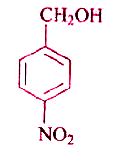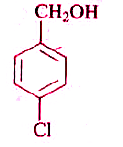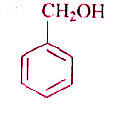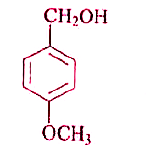HBr reacts fastest with
2 - methylpropan -2-ol
propan - 1 - ol
propan -2 - ol
2 - methylpropan -1-ol
The correct Answer is:A
To determine which compound reacts fastest with HBr, we need to analyze the types of alcohols provided in the options and their ability to form stable carbocations during the reaction.
1. Identify the Type of Alcohols:
- 2-Methylpropane-2-ol: This is a tertiary alcohol because the hydroxyl group (–OH) is attached to a carbon that is connected to three other carbon atoms.
- Propane-1-ol: This is a primary alcohol because the hydroxyl group is attached to a carbon that is connected to only one other carbon atom.
- Propane-2-ol: This is a secondary alcohol because the hydroxyl group is attached to a carbon that is connected to two other carbon atoms.
- 2-Methylpropane-1-ol: This is also a primary alcohol.
2. Determine the Stability of Carbocations:
- Tertiary carbocations (from 2-methylpropane-2-ol) are the most stable due to hyperconjugation and inductive effects.
- Secondary carbocations (from propane-2-ol) are less stable than tertiary but more stable than primary.
- Primary carbocations (from propane-1-ol and 2-methylpropane-1-ol) are the least stable.
3. Analyze the Reaction Mechanism:
- The reaction of HBr with alcohols typically follows an SN1 mechanism, where the rate-determining step involves the formation of a carbocation.
- Since the stability of the carbocation directly influences the reaction rate, tertiary alcohols will react faster than secondary and primary alcohols.
4. Conclusion:
- Among the given options, 2-methylpropane-2-ol is a tertiary alcohol and will form a stable tertiary carbocation, leading to the fastest reaction with HBr.
- Therefore, the compound that reacts fastest with HBr is 2-methylpropane-2-ol.
Final Answer:
HBr reacts fastest with 2-methylpropane-2-ol.
- 2-Methylpropane-2-ol: This is a tertiary alcohol because the hydroxyl group (–OH) is attached to a carbon that is connected to three other carbon atoms.
- Propane-1-ol: This is a primary alcohol because the hydroxyl group is attached to a carbon that is connected to only one other carbon atom.
- Propane-2-ol: This is a secondary alcohol because the hydroxyl group is attached to a carbon that is connected to two other carbon atoms.
- 2-Methylpropane-1-ol: This is also a primary alcohol.
- Tertiary carbocations (from 2-methylpropane-2-ol) are the most stable due to hyperconjugation and inductive effects.
- Secondary carbocations (from propane-2-ol) are less stable than tertiary but more stable than primary.
- Primary carbocations (from propane-1-ol and 2-methylpropane-1-ol) are the least stable.
- The reaction of HBr with alcohols typically follows an SN1 mechanism, where the rate-determining step involves the formation of a carbocation.
- Since the stability of the carbocation directly influences the reaction rate, tertiary alcohols will react faster than secondary and primary alcohols.
- Among the given options, 2-methylpropane-2-ol is a tertiary alcohol and will form a stable tertiary carbocation, leading to the fastest reaction with HBr.
- Therefore, the compound that reacts fastest with HBr is 2-methylpropane-2-ol.
HBr reacts fastest with 2-methylpropane-2-ol.
Similar Questions
Knowledge Check
Which of the following reacts fastest with HBr?
A B
B C
C D
D
The compound that reacts fastest with Lucas reagent at room temperature is
Abutan-1-olBbutan-2-olC2-methylpropan-1-olD2-methylpropan-2-olThe compound which reacts fastest with Lucas reagent at room temperature is
Abutan-1-olBbutan -2-olC2-methypropan-1-olD2-methylpropan -2-ol


